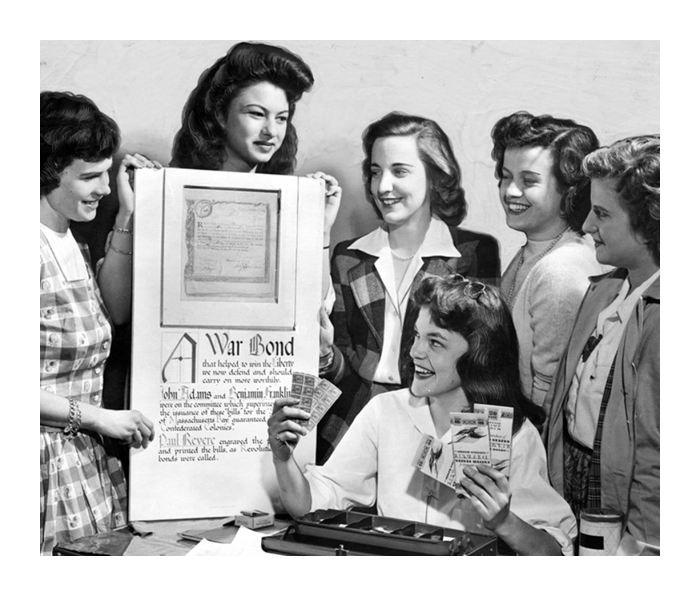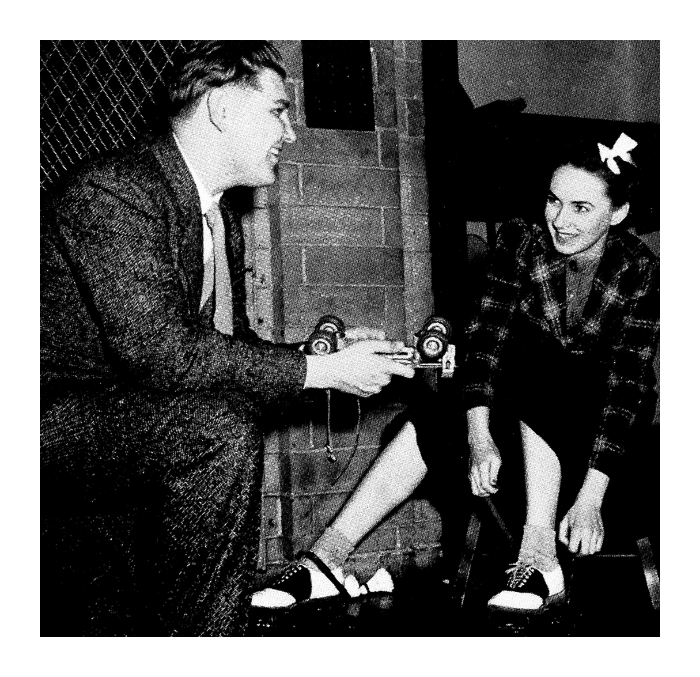
(Chicago Cap and Gown, 1941)
Marjorie Sullivan Lee, AB’43, lived in Foster Hall, roller skated in Ida Noyes, and watched Robert Maynard Hutchins go to work.
Early this year the University of Chicago Magazine received a rare bit of snail mail—a little green note card with a bird wreathed in flowers. In elegant cursive, Marjorie Sullivan Lee, AB’43, updated us on her lifetime of activism for people with Down syndrome. She also encouraged other graduates from the 1940s to send in their news.
The Core spoke with Lee, now 101 years old, about her memories of the College, her work at the Federal Reserve, and her activism. This interview has been edited and condensed.
Did you live on campus?
In Foster Hall. It had a beautiful tower. The tower room was very expensive, but there were two little rooms adjoining it, and they were less expensive. I had one and oh, it was a lovely place.
They locked the front doors of the building at ten or eleven o’clock at night. If we were out on a date, we had to come through a back doorway that served the four women’s dormitories—Foster, Green, Kelly, and Beecher. An older lady was in charge of this entrance overnight. We had to sign in, then we walked underground to our own dormitory. So we were protected, I guess you might say.
Foster Hall was about a block away from Rockefeller Chapel and right across the street from the home of the president, Robert Maynard Hutchins. I used to watch him walk out his front door.

What activities were you involved in?
One of the things I remember most is we had a big gym in Ida Noyes with a wooden floor that we could roller skate on.
We didn’t have sororities; we had clubs. I was president of a women’s club called Wyvern. My senior year I was in the senior women’s honor society, Nu Pi Sigma, which was linked to the men’s honor society, Owl and Serpent.
After our meetings we would all go to the C Bench and sing. We sang something called the Maroon songs. But I guess we sang just about anything.

What was campus like during World War II?
There was a minimum of men on campus. The ones who were there were part of a meteorology group. They marched in uniform from their living quarters to their classes every day.
Many of us women considered going into the service—with the WAC [Women’s Army Corps] or the Red Cross. I considered both. I was talked out of it by my family. They were hoping that I would graduate and get myself married and have a family.
One of my friends, Mary Hammel [AB’41], became very much involved. She had a pilot’s license and spent almost every weekend practicing at an airport nearby. During the war she became an instructor for Army pilots.

What made you choose economics as a major?
As a student I had a job in the economics department doing secretarial work. I just kind of floated into it.
Right out of college I got a job at the Federal Reserve Bank of Chicago. They had this good economics department. Not all banks had such a department. I started out as a secretary. It was hard to jump over the typewriter—it took a while to get respect for my abilities in economic research.
They began little by little to let me do some independent work, like looking up statistics on a certain topic. I have always felt I do some rather good writing and so I pushed for the opportunity on that. I was very pleased when I finally had one of my articles in the bank’s magazine. I enjoyed it for five years. The only reason I left was I got married and I wanted to have children.

How have you kept in touch with other alumni?
We developed a round-robin letter system. There were seven of us from Wyvern club. I’d write my letter, send it to number two on the list, then she’d write her letter and send both to number three. When it came back to me, I’d take out my old letter and attach a new one. It kept going for about 50 years. How about that?
You received a UChicago Alumni Association Public Service Award in 1993 for your Down syndrome activism. How did you get involved?
My son Kevin was born with Down syndrome. There were a lot of difficulties in fighting for inclusion. I got very busy.
Among other things, I developed a parents’ alliance for special education while our kids were in school, fighting for the chance for them to be in regular school classrooms. And then we developed the Parents Alliance Employment Project, where we helped these young folks find jobs. I never insulted anybody who didn’t agree with me, but I always tried to share my views.
What are you most proud of?
I’m proudest of my son Kevin.
